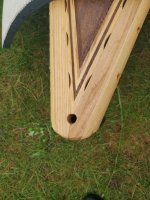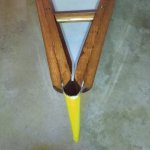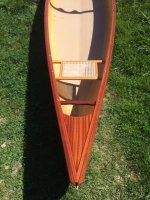While at the ADK Canoe SYmposium this weekend, I met a fellow Northstar owner who drilled drainage holes in his decks. He claimed that rot most often appears in the stems where that last bit of water can't escape through those drainage slits farther back on the deck plates once you flip the boat over for transport and storage. I'm not sure if he was talking about this style of Northstar deck in particular or wood decks in general - I didn't think to ask at the time.
I'd like to think Northstar wouldn't be making decks like this if they're prone to rot? Has anyone experienced this issue with this particular style of deck?

I'd like to think Northstar wouldn't be making decks like this if they're prone to rot? Has anyone experienced this issue with this particular style of deck?



